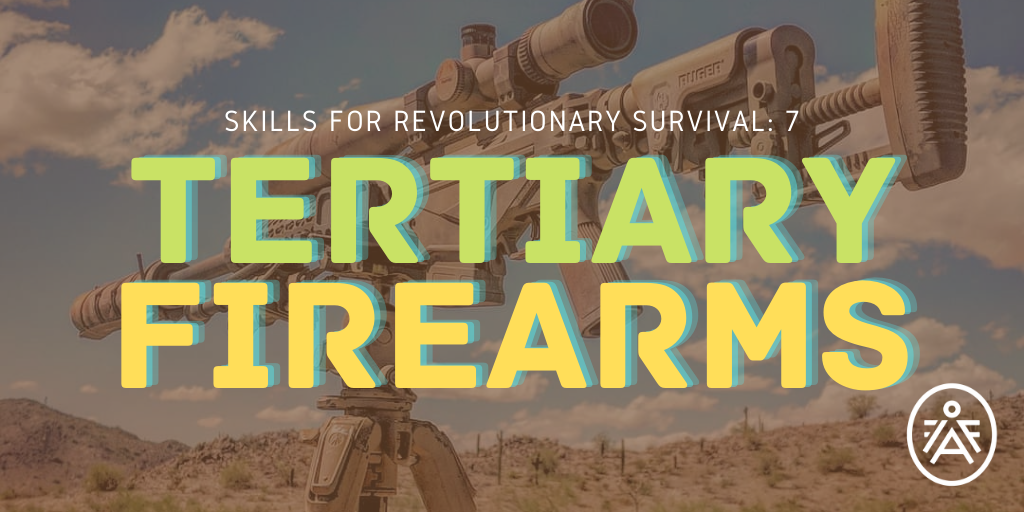By Eepa
The acquisition of arms is as old a revolutionary story as revolution itself. From Tupac Amaru to the Zapatistas, arms have been vital material components for liberation. American revolutionaries are uniquely positioned in the world to have access to affordable, quality, modern firearms for defense & action. The market for firearms in the US is so saturated with options, it can be intimidating to first time buyers to find the tool that will fit their needs.
This article will discuss your options for tertiary firearms, i.e. firearms that might be considered for purchase after acquisition of primary and secondary firearms (see the previous articles in this series). Primary firearms are largely for use against aggressive people in defensive/combat situations. Primary firearms are versatile defensive/offensive arms, while secondary firearms are used for hunting and training. The tertiary firearms we will be discussing today can be divided into two groups; defensive handguns and precision rifles. We will examine each of these firearms systems and discuss the accompanying kit you will need to get these into action.
Lets again start with some definitions:
Precision Rifle: Any rifle designed for accurate/precise fire at range. The range in question will depend on the cartridge of the rifle and the skill of the shooter.
Bipod: A device consisting of two legs used to support the front of a rifle when resting on the ground or surface of a shooting position.
Pistol: A semi-automatic handgun that fires one shot per trigger pull, feeding cartridges from a magazine.
Revolver: A handgun with a cylinder containing 5-12 cartridges. These can be single action, meaning they have to be cocked after each shot, or double action, meaning they can be fired by pulling the trigger after each shot.
RMR: A Rear Mounted Red-dot, a red dot optic that is small enough and durable enough to be mounted on the back of a pistol slide that has been milled to accept this type of optic.
Scope: An optic designed to provide magnification of a target while shooting.
I. Handguns
Handguns can best be described as a last ditch defensive firearm. They are far harder to shoot and are far less accurate that the primary firearms we have already discussed. Their short sights, trigger pulls, and lack of stock support makes accurate fire challenging without regular practice. Practice mean hundreds of rounds a month and lots of dryfire exercises. What they are designed for is close encounters at ranges of ten yards and less. Any further (as cops in NYC have regularly demonstrated) you run severe risk of errant bullets hitting innocent people. These truly are for the following limited circumstances:
- When carry of a rifle/carbine would draw too much attention.
- When concealment is the number one concern.
- When as a backup to a primary or secondary firearm.
- When in extremely tight areas that limit freedom of movement.
Handgun brands/models number in the thousands. This can make selecting a firearm difficult. We will not be making an exhaustive list of firearm models, but will recommend used types to look for. Remember, these are not something you are going to be using a lot, so it is better to get something used here than skimp on your primary firearm. If you already have a pistol, stick with it and get good with it.
Semi-Auto Pistols
If looking for something used or new, look for something in the universal cartridge, 9mm (9x19mm Parabellum/9mm NATO/9mm Luger). Don’t get into caliber debates with salesman, don’t get sucked into debates about ‘stopping power,’ 9mm is commonly available, modern hollow-points are extremely effective, and recoil is manageable for most everyone.
New: Glock 19 or Glock 17 – Excellent well proven firearm with wide availability of parts and magazines. The Sig Sauer M17 is quickly gaining this reputation as well.
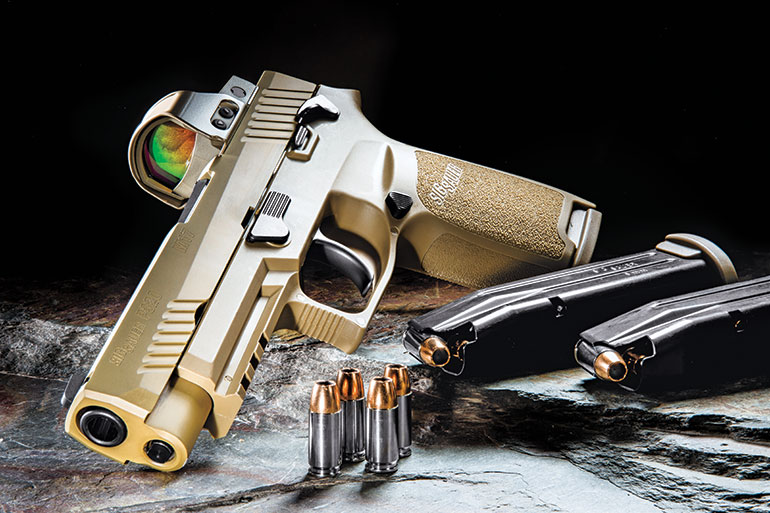

Self Made: Polymer 80 or Glock type 3D Print – No transfer through FFL and easy to build!
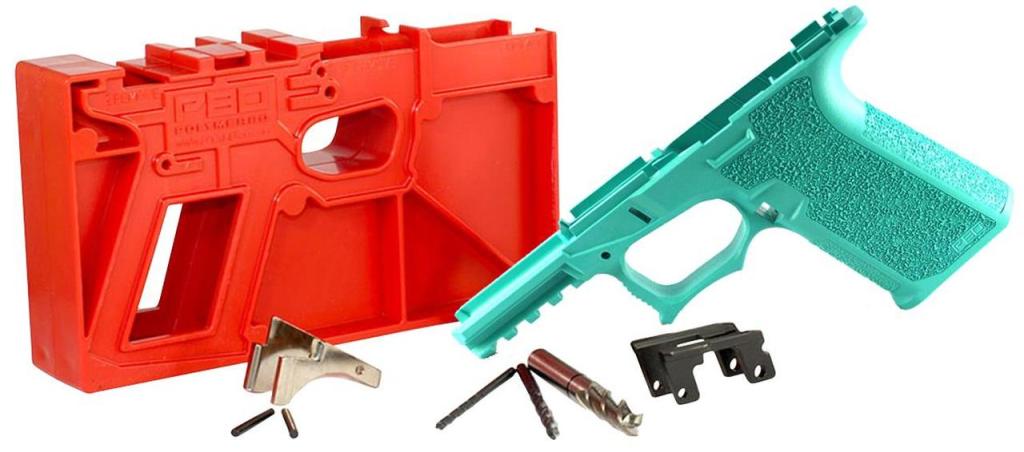
Used: Glocks, S&W M&Ps, Springfield XDs, Sig Saur’s, Canik, CZ semi-autos, Beretta 92s, HK USPs, Tanfoglio CZ clone, Browning High Power, Steyr M9, Rock Island 9mm 1911’s
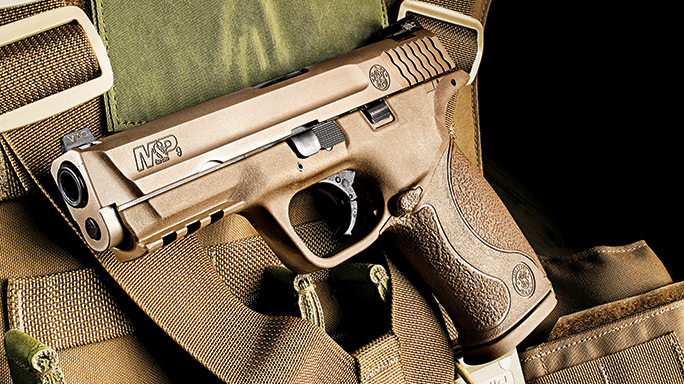
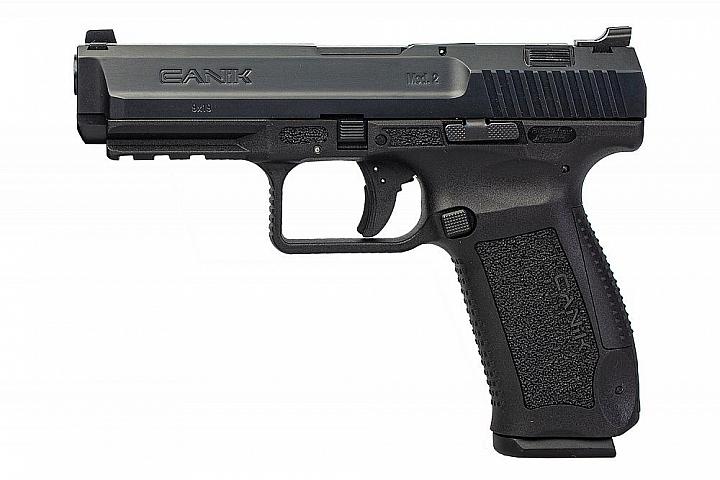
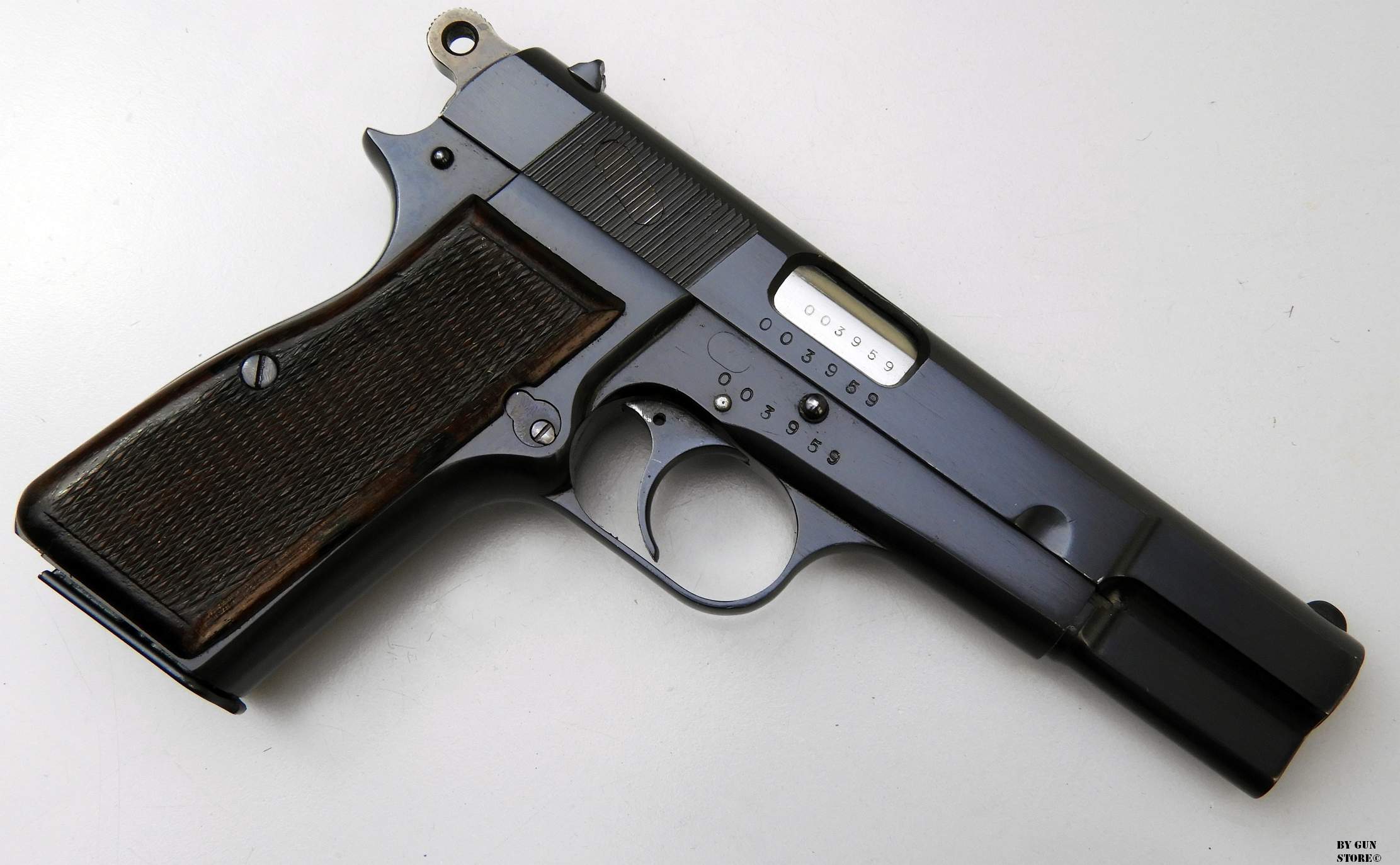
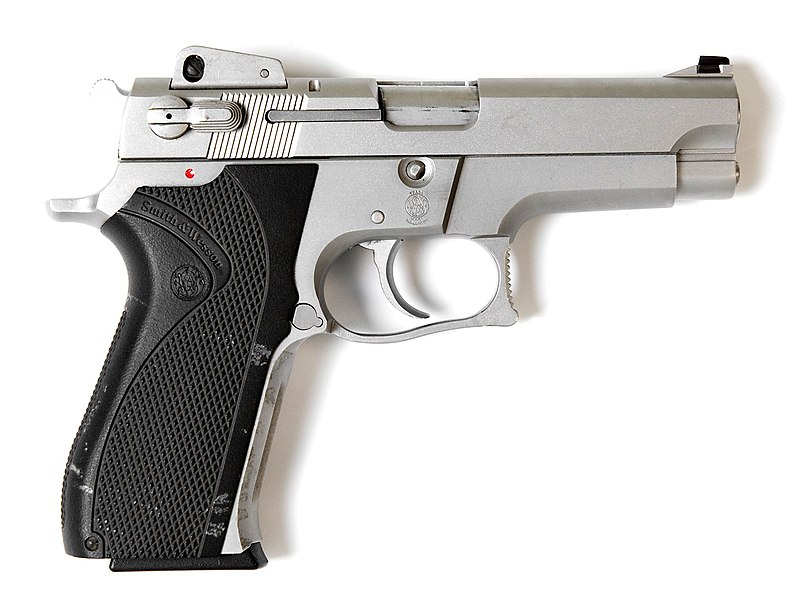

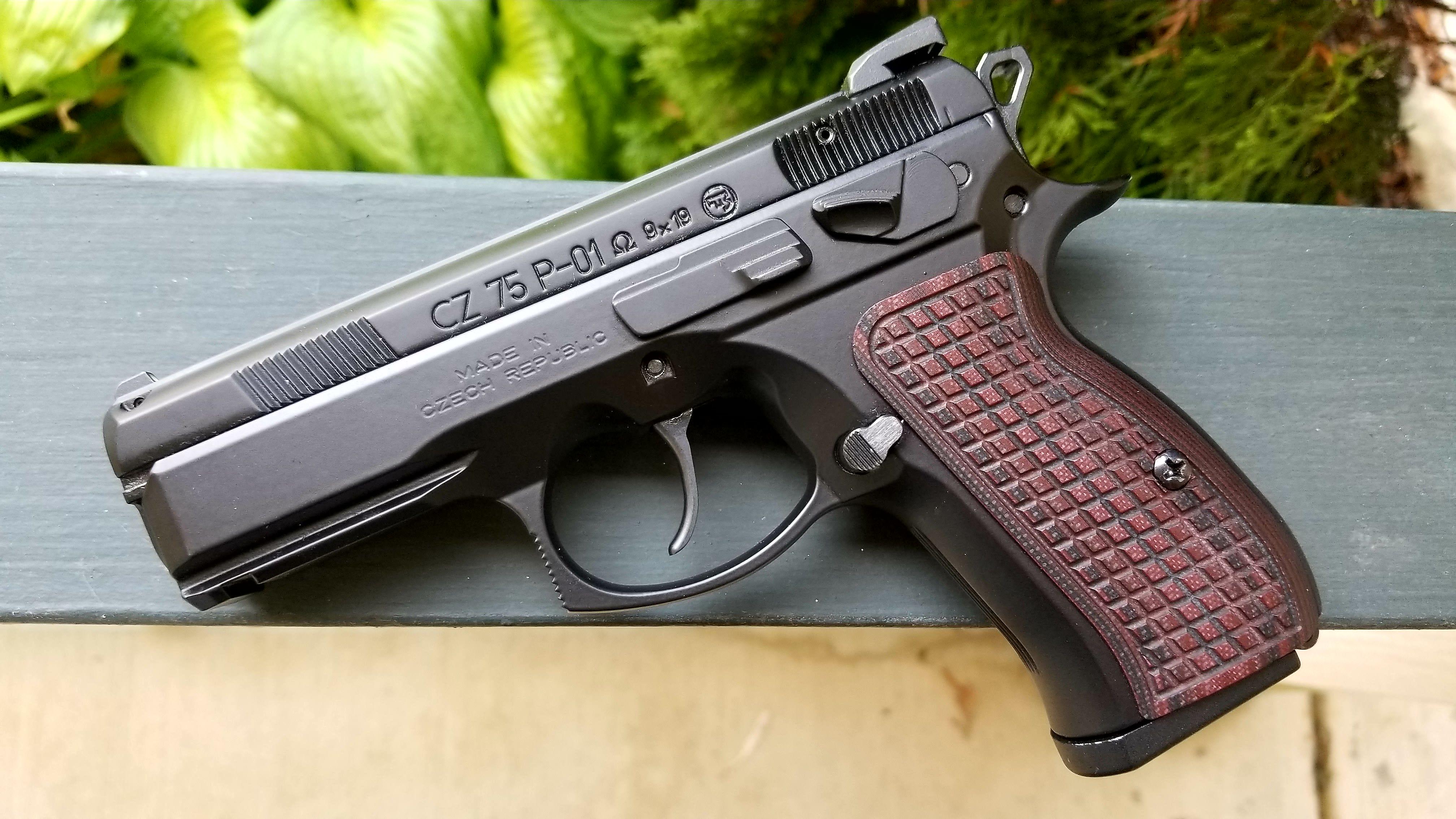
Ultra Budget: Hi-Point 9mm & Hi-Point YEET CANNON G1. Bulky but reliable and all for around $100-$150.
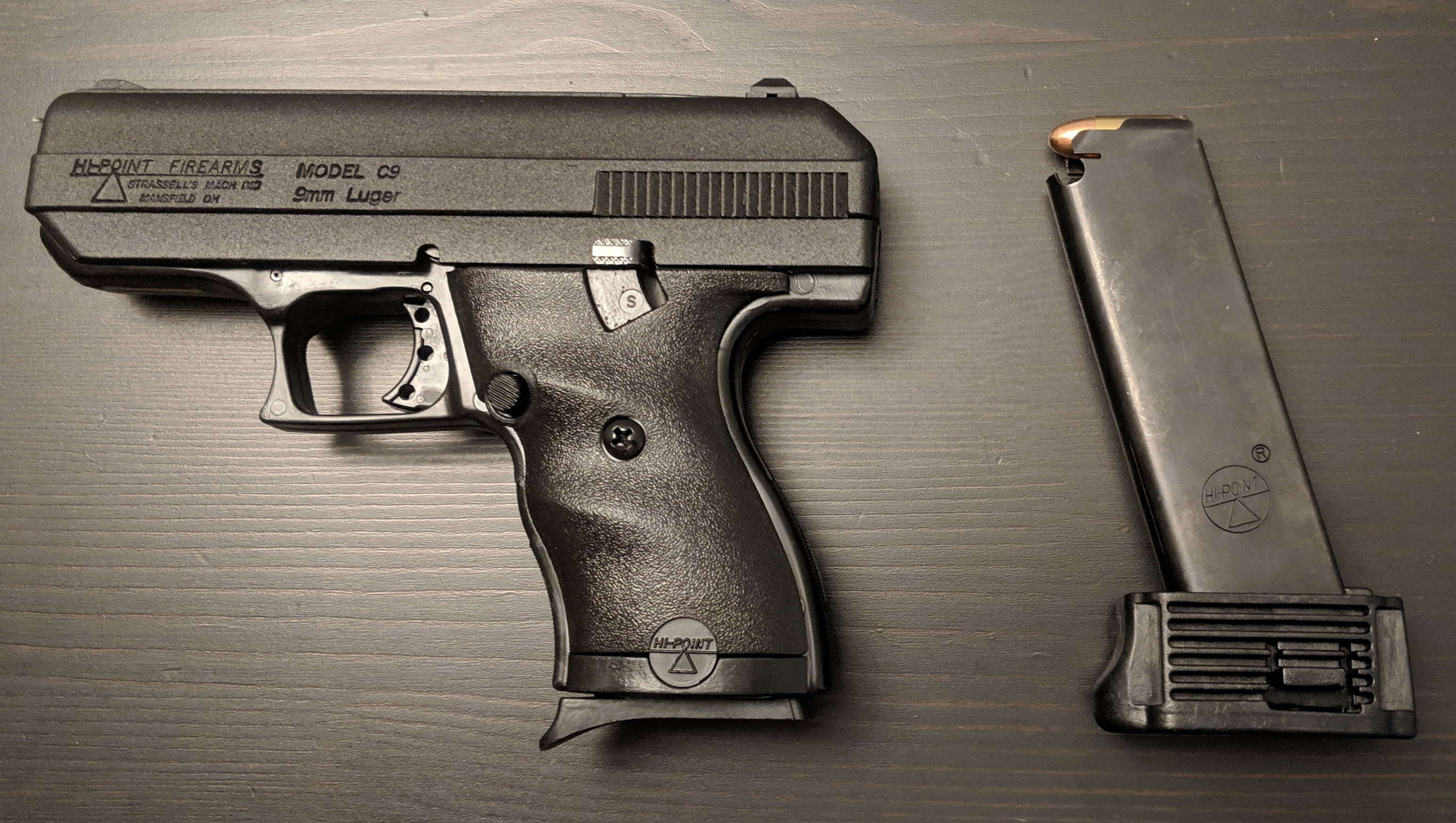
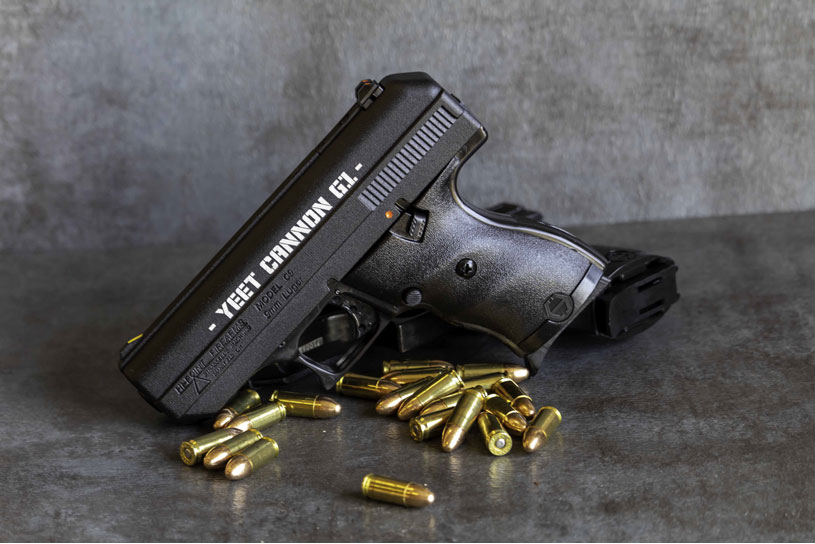
Revolvers
Despite popular rumors, revolvers are not good options for new shooters or shooters with weak hands. They are good for those in states that limit magazine capacity or for those who may need to defend themselves against aggressive animals with a more powerful cartridge, such as 45 Colt, 44 Magnum, 357 Magnum. Any revolver by Ruger or Smith & Wesson will meet the quality standards for these types of guns though they are expensive unless found used. The cheapest new guns are the Rock Island .38 Specials, which are good, just rough. 357 Magnum is probably the most versatile cartridge in revolvers, shooting both the excellent defensive 357 Magnum and the much lighter-recoiling .38 Special, perfect for cheap practice.
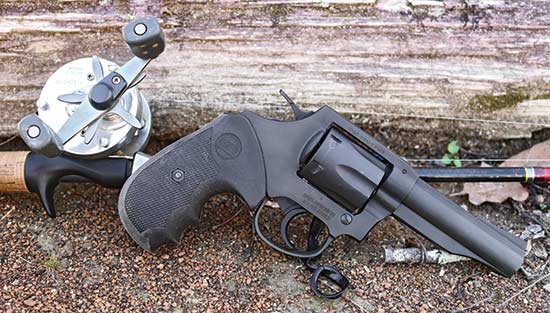
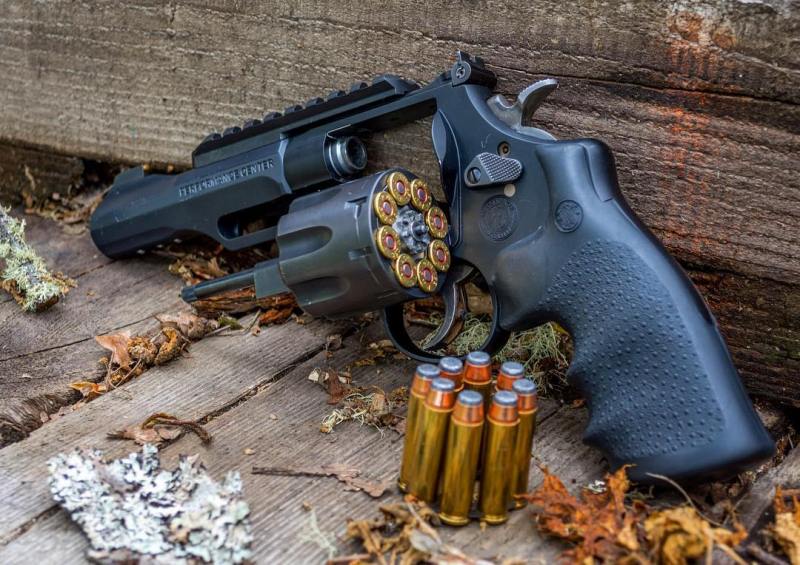
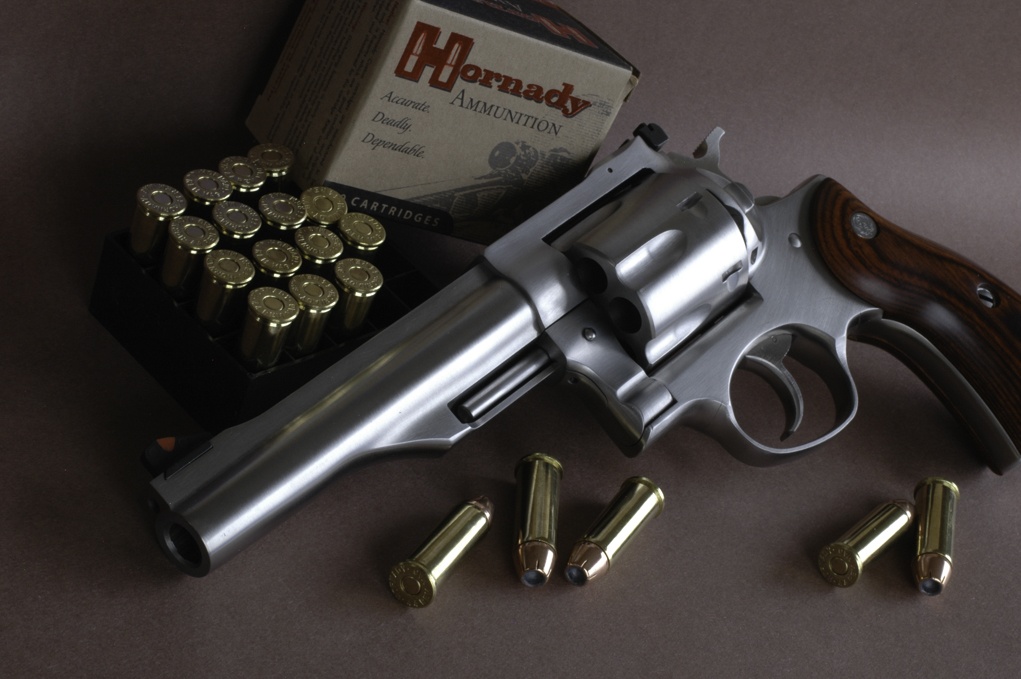
Pocket Handguns
Pocket handguns offer deep concealment fitting in most men’s jean pockets (women’s pants notoriously have tiny pockets, but your local alterations shop can help get proper sized utilitarian pockets sewn into your favorite pants). Pocket pistols are typically chambered in .32 Auto (Walter PPK, CZ-70, FÉG PA-63), .380 ACP (See Ruger LCP, S&W Bodyguard, Glock 42) & some in 9mm (Glock 43). Revolvers are typically in .38 Special (Smith & Wesson J-Frames, Ruger SP101 & LCR). Revolvers can be purchased with shrouded hammers, allowing them to be fire ‘from the hip’ while concealed in a windbreaker pocket, a dangerous use, but one that would allow you to react covertly to someone who already has drawn their weapon on you.

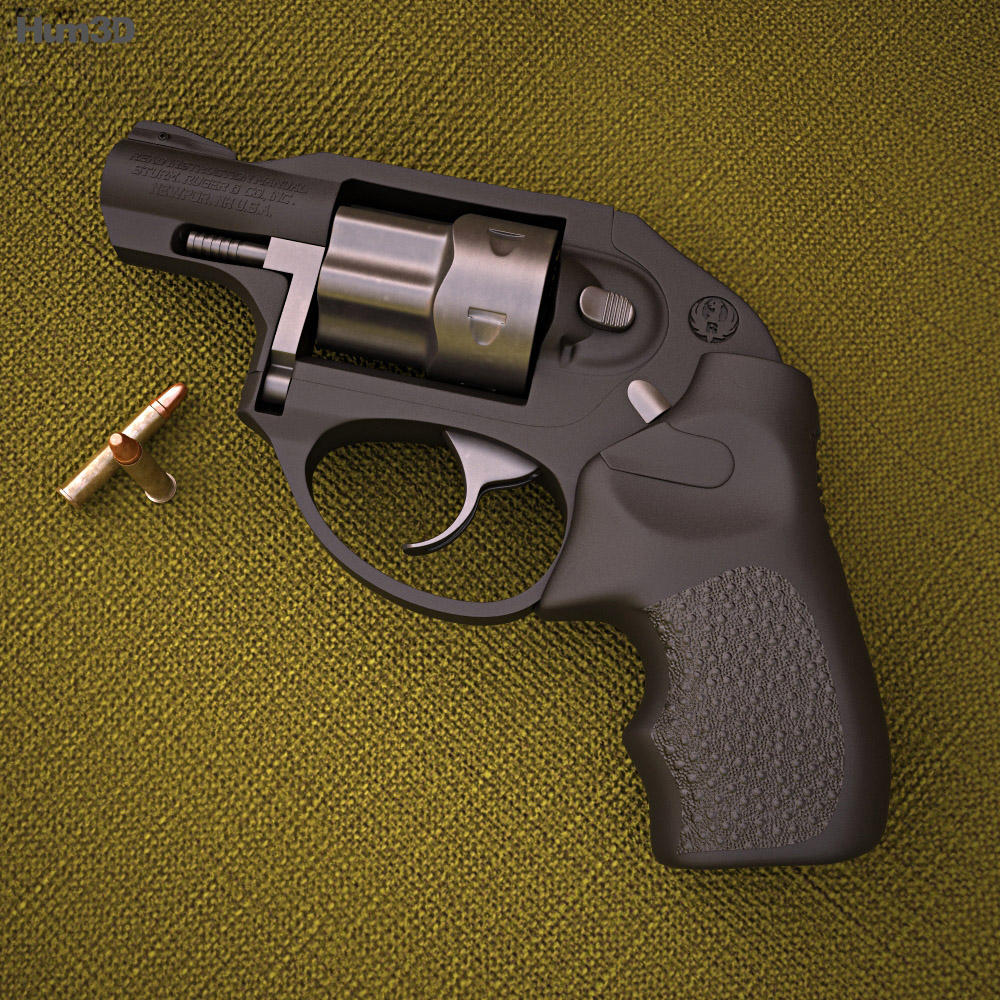
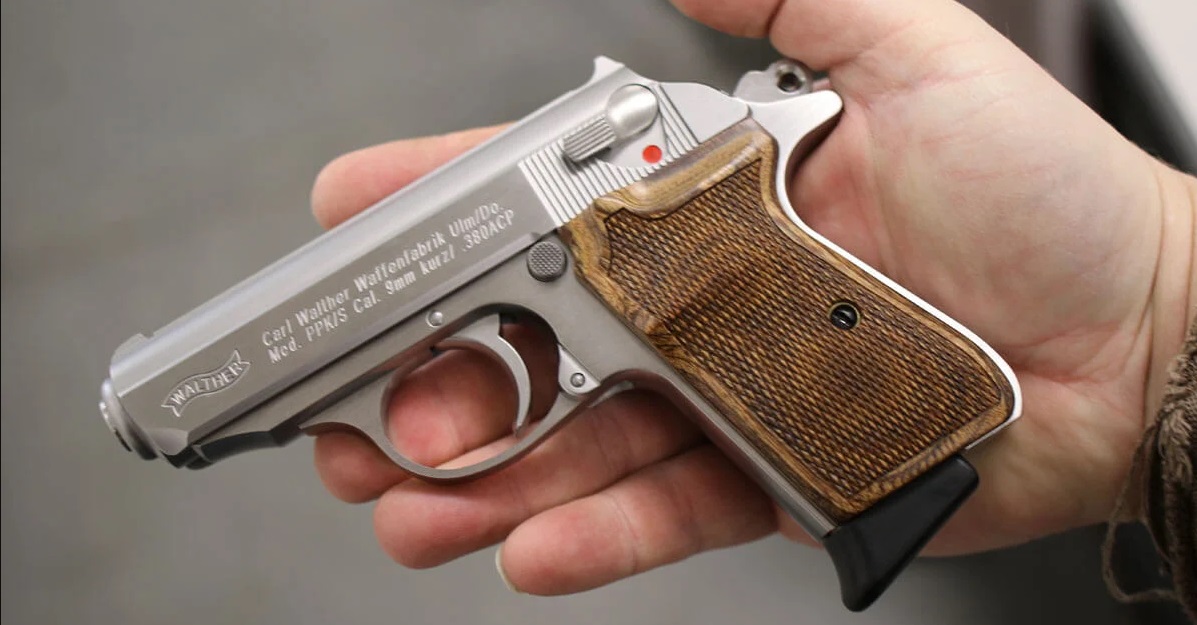
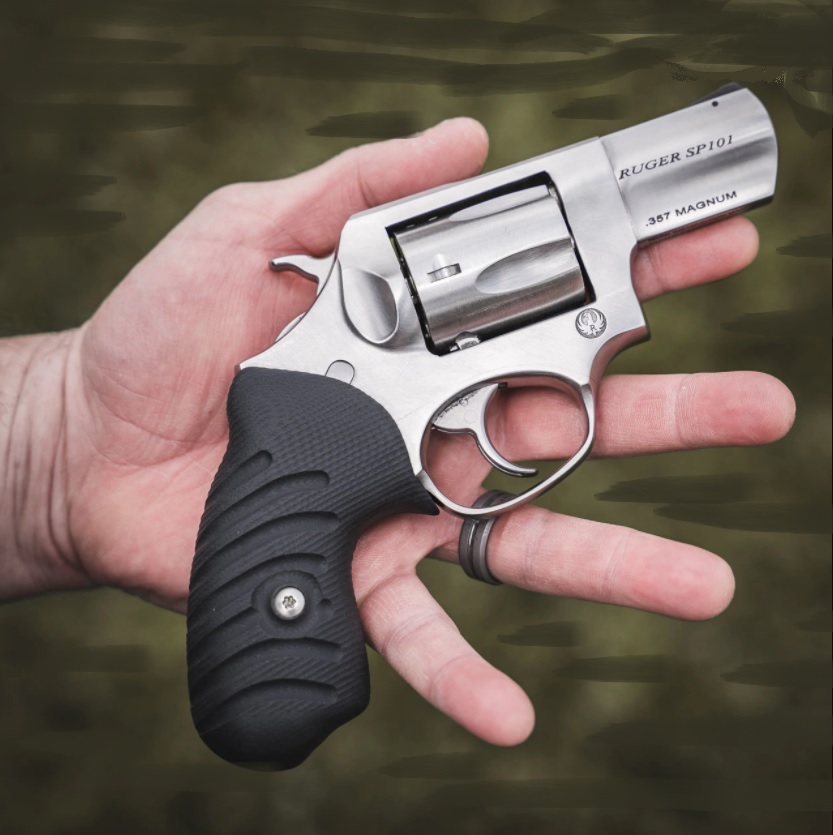
Armor Defeating Handguns
Handguns can defeat soft body armor with the correct caliber choice. The cheapest option would be any pistol chambered in 7.62×25 Tokarev. Variants of the Tokarev TT-33 pistol are available for around $150-$350. Make sure to get surplus ammo that is full metal jacket (FMJ). Modern ammunition is loaded to slower speeds and won’t perform as well. Be sure to do your research and avoid ammunition reported to have hard primers.
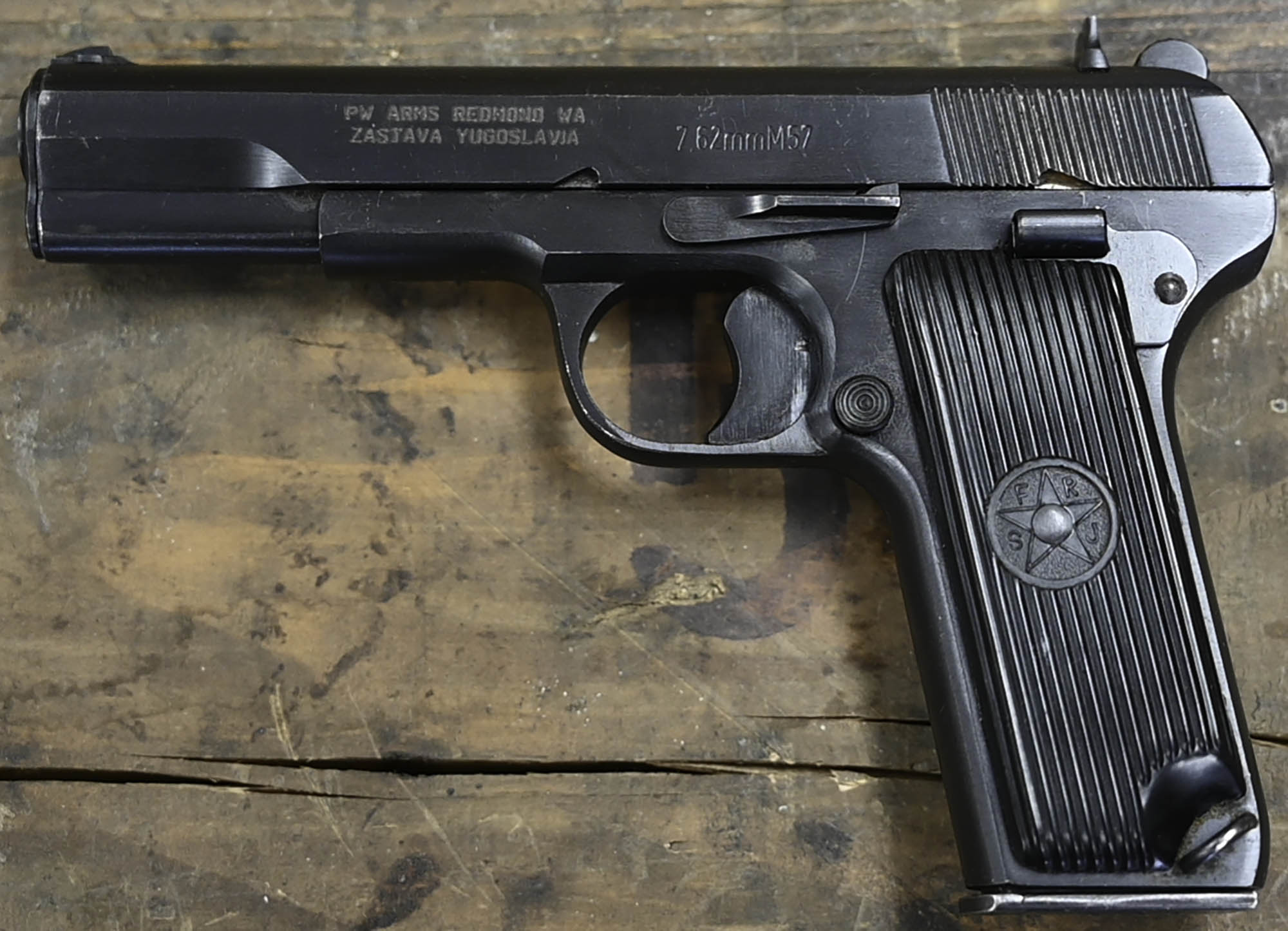
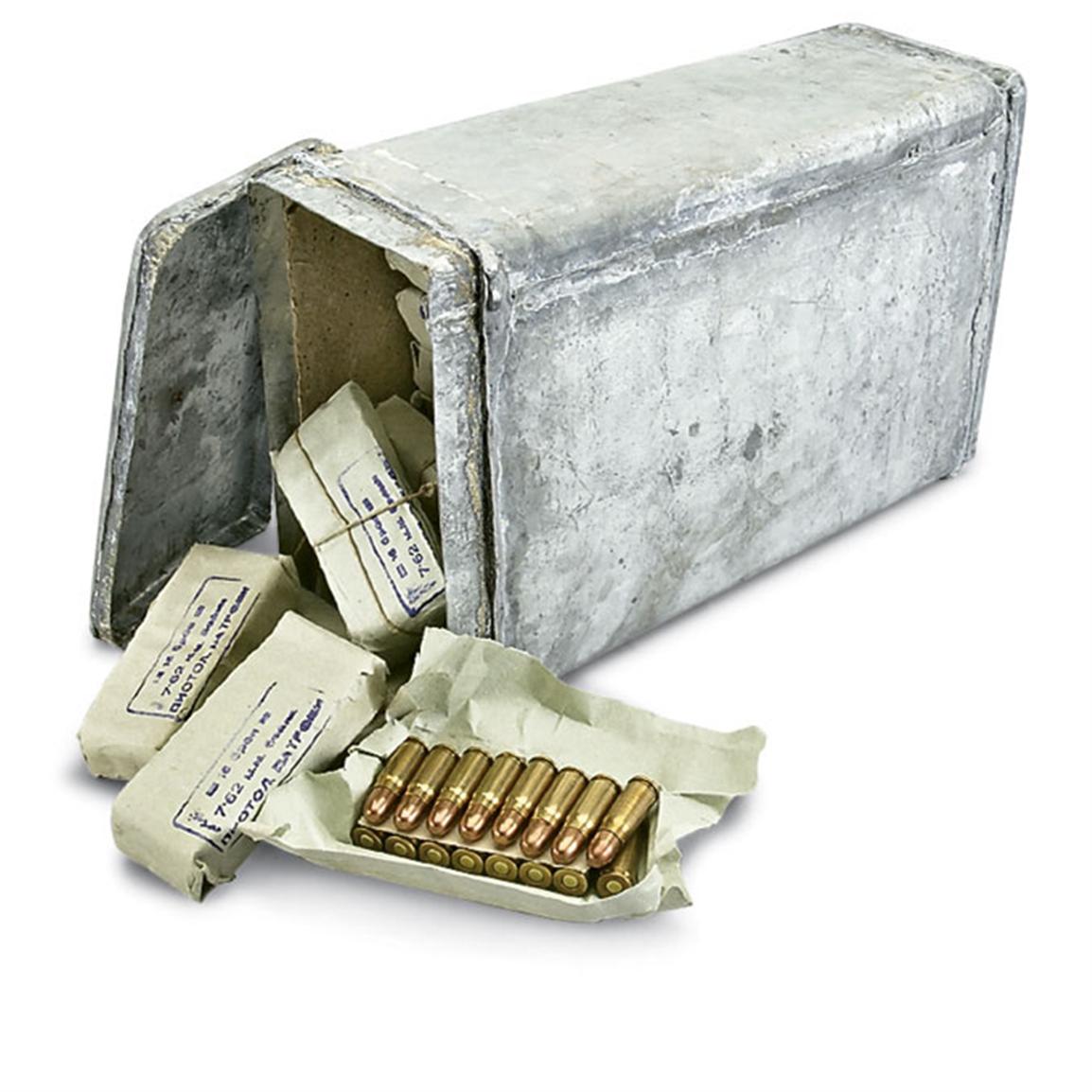
FN 5.7×28mm is a high capacity modern alternative for this role. Ruger recently released a more affordable option than FN’s expensive pistol. Ruger’s pistol costs $575-$800. Make sure to get SS198LF or preferably SS190 for the penetration performance. All other rounds are down-loaded and designed not to penetrate vests.
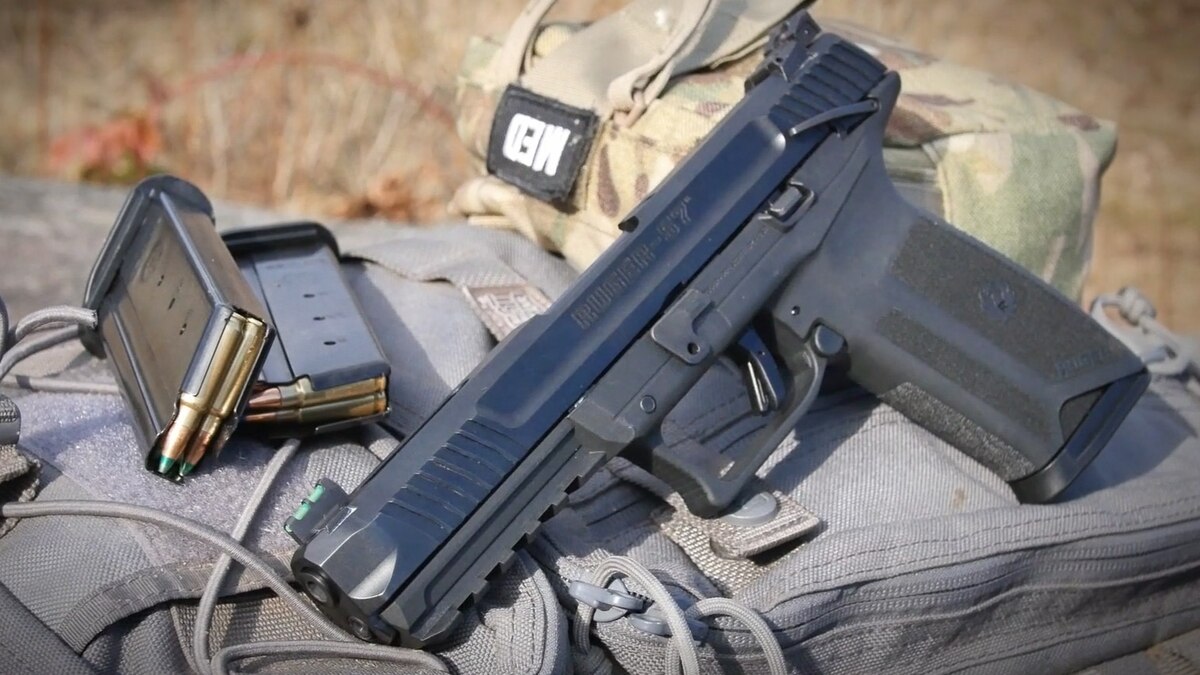
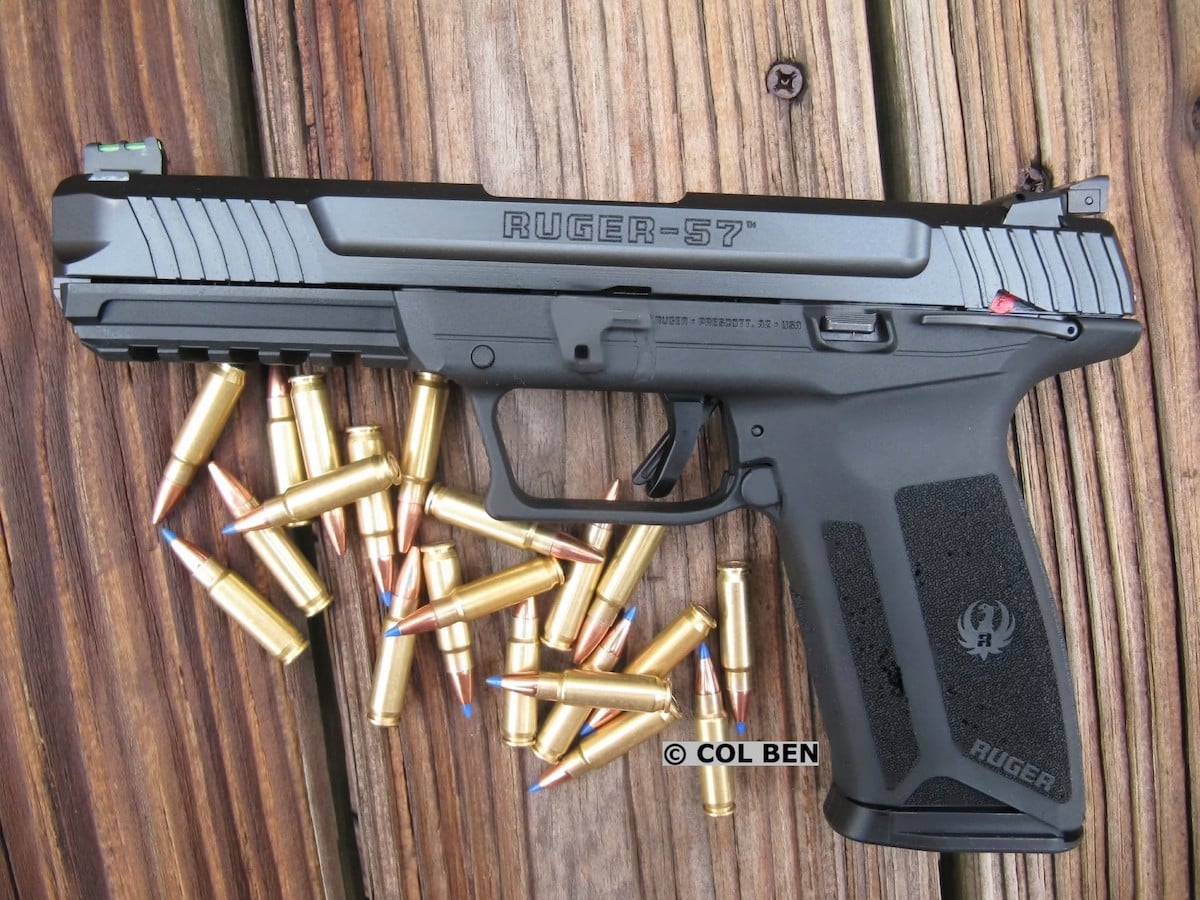
Handgun Accessories
Holsters:
Handguns require a holster for safe carry. A good holster will cover the trigger fully. Holsters come in three main varieties: pocket, inside the waistband (IWB), and outside of the waistband (OWB). Concealment holsters will usually use tension to hold the firearm in place. Make sure your holster has adjustable tension for these types of holsters. An easy way to test to see if your holster has enough tension: you should be able to hold the holster upside down without the handgun falling out.
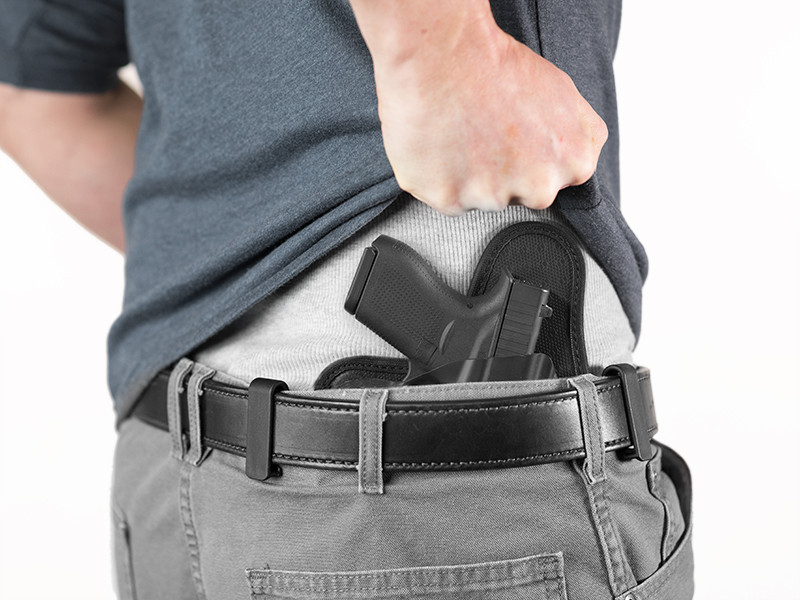
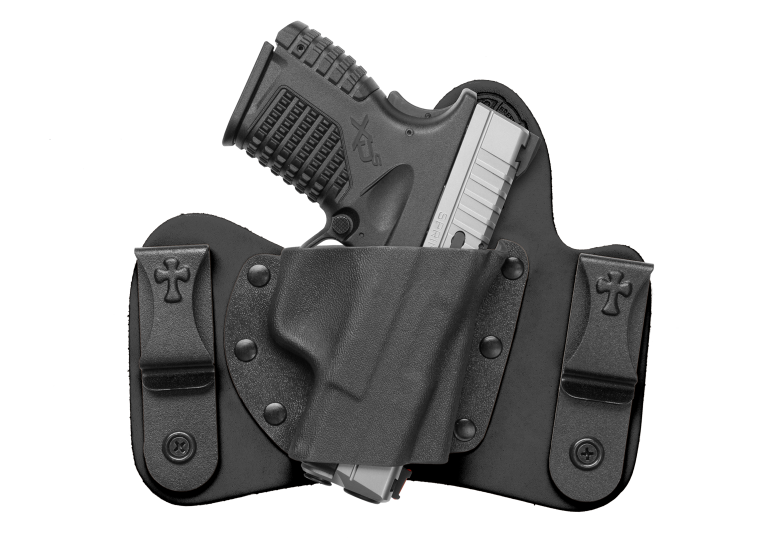
OWB holsters that are non-concealment MUST have active retention. Active retention requires the activation of a switch in order to draw the pistol. Why is this important? It prevents anyone other than you from pulling your gun. Someone can’t grab your gun in a fight or disarm you when you are not paying attention. The Blackhawk! Omnivore is a great option, capable of taking almost any firearm with a Picatinny light rail!
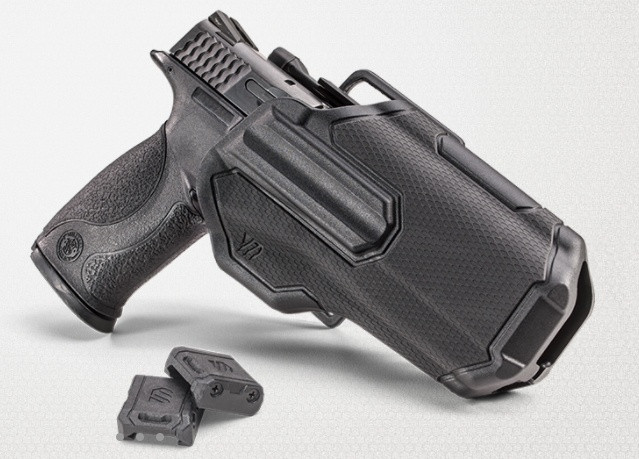
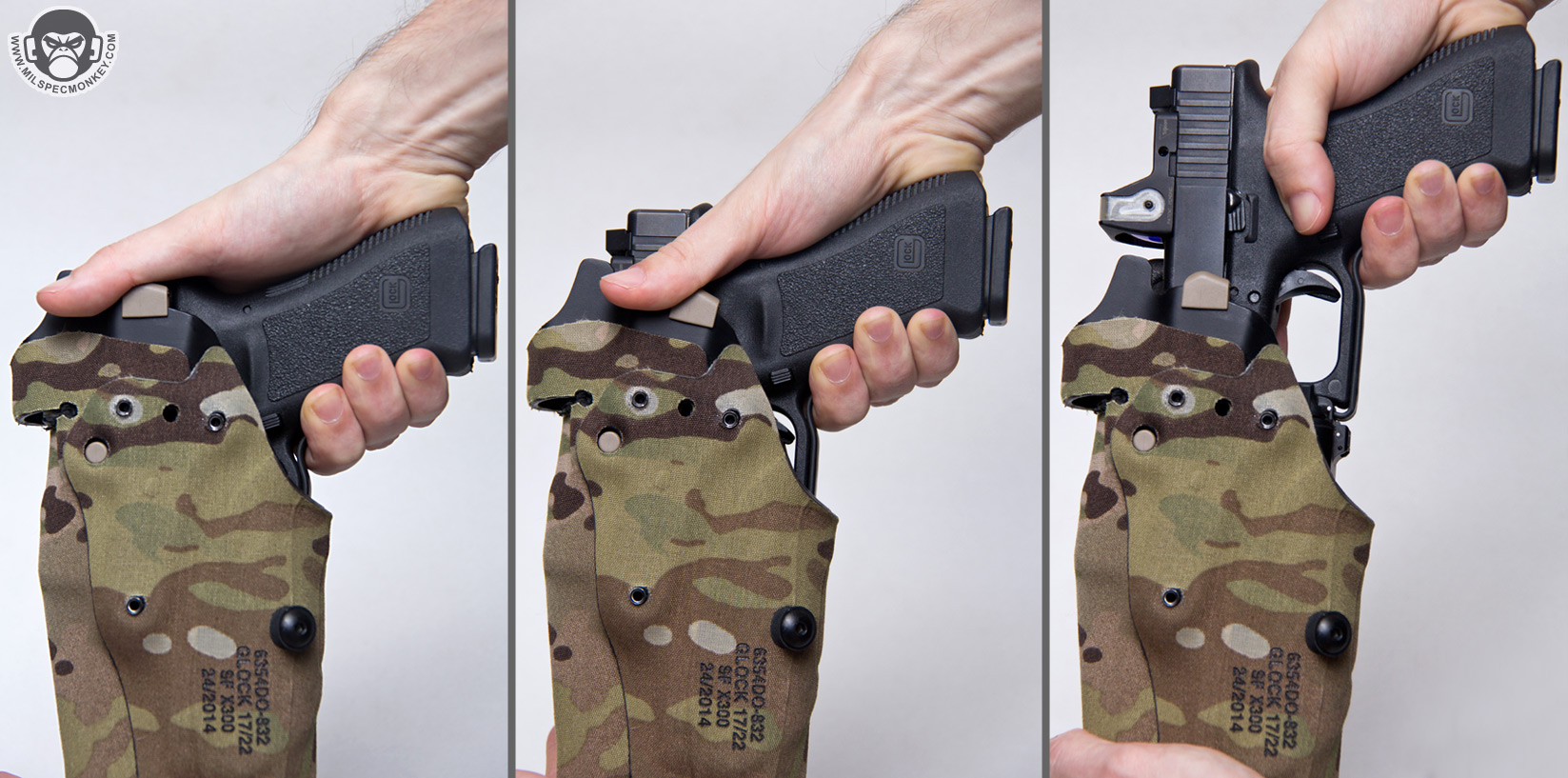

One final note on retention holsters: DO NOT BUY A SERPA style holster or any holster where the release button is close to the trigger. That is dangerous and can lead to accidental discharges/injury. Thumb release holsters are the way to go.
Magazines and Speed Loaders:
Only buy duty magazines (the magazines you will carry with you in a defensive situation) from the manufacturer of the firearm. After-market magazines are fine for practice, but should not be used in defensive situations.
Speedloaders and Moon Clips are useful, but you need to practice with them often.
Optics:
If you can buy a pistol or revolver that has the ability to mount an RMR, do it. These significantly increase the speed and precision of your shooting, especially on follow-up shots. Practice with them regularly. Good RMR’s will last with the same battery for months, even years. We recommend Trijicon RMR, Aimpoint ACRO, Leupold DeltaPoint Pro Reflex Sight, Holosun 507c (which has an integrated solar panel!). The best optic for the money right now is the Holosun HE509T-RD, which featurs a fully enclosed emitter, solar panel, and titanium constrcution and versatile mounting otions. Other RMRs are known to fail or have very short battery life, so skip them. Make sure you get a holster that will accommodate an RMR on your handgun. Small craftspeople will often custom make holsters for you and you won’t have to give your money to Safariland, that maker of anti-protestor munitions.
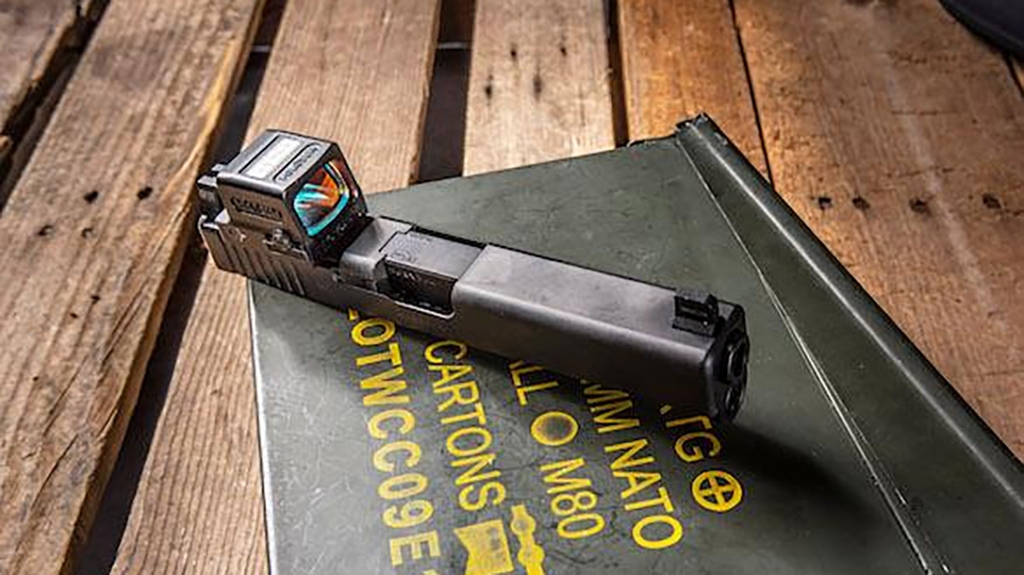
II. Precision Rifles
Precision rifles are designed to do one thing, put bullets predictably in the same spot with consistency. There are a number of ways to do this and a number of factors that go into deciding what rifle will best fit a foreseen role. These factors include expected ranges, weight of the rifle, and target abundance (need for rapid follow-up shots). We will examine two types of common rifle, the semi-automatic designated marksperson rifle (DMR) and the precision bolt action sniper rifle.
i. Designated Marksperson Rifle (DMR)
DMR’s are designed to provide accurate fire at range in a squad formation. This means an individual who has the training and experience to engage targets at unknown ranges with accurate fire. This can be for the purpose of suppression (keeping their heads down while other elements advance) or for target neutralization (taking out enemy snipers, commanders, and equipment). This is done on the move, often with limited preparation. Designated markspersons should be able to rapidly choose shooting positions that provide cover and overwatch. They need to take rapid shots, often at moving targets. This requires a semi-automatic rifle.
When ranges are expected to be 600yds or less, an AR-15 with an 18-20inch heavy barrel, free floated handguard, 1-7 barrel twist, and 75-77grain .223 Rem or 5.56 NATO ammunition will work well. This allows you to use other squad mate’s ammo in a pinch, and has the same parts interchangeability. This is the cheapest DMR rifle to build or buy. Some options include the following:
When ranges are expected to be 600-1200 yards, an AR-10/SR-25 type rifle will work well. Be sure to look for a rifle in 6.5 Creedmoor, 18-20inch barrel with 1-8 twist, with a free floated heavy barrel, and using 140-147grain match ammunition. The Robinson XCR-L in this caliber is also a good option. Recoil for this caliber is low, bullet drop is minimal, and it is more forgiving at range. USSOCOM (U.S. Special Operations Command) found that, as compared to .308/7.62x51NATO (specifically M118LR, the military’s best long-range .308 load), 6.5 Creedmoor doubles their snipers’ hit probability at 1,000 meters, increases effective range by at least a third, increases energy on target by 50%, and reducing the effect of wind by 40%, all with at least 30% less recoil. These are professionals, so anything we can do to increase our hit probability is very desirable. Luckily ammo costs are comparable with match .308 Winchester ammo. These rifles are expensive, hence why only one person in a squad needs to have one. Some options include the following:
- LMT MWS
- Aero Precision M5
- Savage MSR10
- Seekins SP10
- JP LRP-07
- LWRC REPR MKII
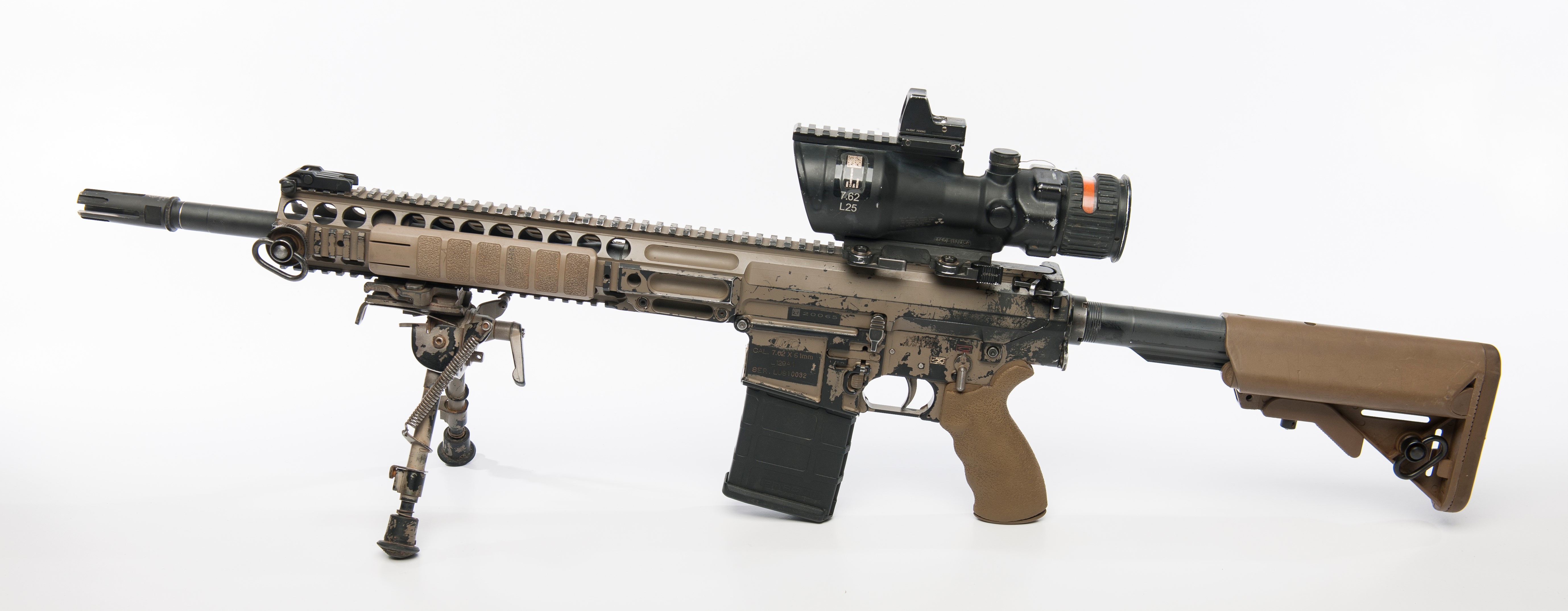




DMR Optics:
Optics for DMR’s should provide the shooter with speedy ranging and a reticle that provides ballistic drop aiming points. The best of these reticles are the ACSS optics offered through Primary Arms. These reticles allow for the rapid determination of range based on a standing person, marks for bullet drop from 100 yards to up to 1000 yards, and marks for wind speed and a running target. Many DMR platforms use fixed power optics such as the 6x Trijicon or the 5x Primary Arms, though variable optics in the 1-6x, 1-8x, and 1-10x are also available for this role.
DMR Bipods
Bipods provide rapid rifle support in mixed positions. The best bipods for rapid deployment are Harris bipods. Make sure you get the ones that come with the pan and tilt function. Removable mounts for these, such as quick detatch mounts for picatinny rails, allows the rifleperson to remove the bipod, making the rifle lighter for long periods of carry.
ii. Precision Bolt-Action Rifles
Precision bolt action rifles are designed for slow, deliberate fire, from deep concealment. These riflepersons, better known as snipers, require precision first, then choose caliber based on the range of expected targets and level of protection expected on the target. These rifles are typically bolt-action, have long barrels which enables full velocity of a cartridge by allowing more time for the powder to burn, and a heavy barrel weight to help reduce barrel deviation from repeated fire.
Typical modern hunting rifles with lighter barrels are capable of incredible accuracy (sub-MOA; less than an inch at 100 yards), but only for a few repeated shots. As the barrel heats up, it will start to deviate, meaning your fire will become less precise with each additional shot taken. They also will typically have shorter, handier barrels, that make stalking deer in the woods easier, but limit performance at extreme ranges. Important note here, longer barrels do not make a barrel more accurate. Short barrels can be more accurate, but sacrifice velocity. Velocity is important for maintaining precision at extreme ranges by reducing the effect of wind on the bullet, and for retaining the enery needed to drop a target.. Hunting rifles will often require a stronger trigger pul, a safety that is included for the stalking hunter. Precision rifles often will have tuned or adjustable triggers allowing for very light trigger pull. A good rule of thumb is not to go below 3.5lbs unless you are very experienced.
We will examine three classes of rifle: rimfire, medium caliber, and large magnum caliber.
a. Rimfire Precision Rifles
Precision bolt action rifles in rimfire calibers such as 22LR and 22WMR might surprise you, but they have seen effective use in several guerilla campaigns where the number one priority of the sniper was concealment, both from the quiet report of the rimfire ammunition and from the concealability of the rifle (see the book Fry The Brain: The Art of Urban Sniping and Its Role in Modern Guerrilla Warfare by John West). When looking for a rimfire precision rifle look for a bull barrel, a good trigger, a threaded barrel (for suppression), and if possible, the ability to take down the rifle into a smaller size. Even a semi-auto rifle such as a Ruger 10/22, with the right features, will fill this role very well. The maximum range on these rifles in this role is ~100 yards. Rimfire scopes can be much cheaper and smaller as well, but versions with an ACSS reticle tuned for rimfire will aid immensely in aiming, even for less experienced markspersons. If long-range shooting is an interest you want to pursue, this is a good way to develop your fundamentals; wind, elevation, target movement.




b. Medium Caliber Precision Rifles
The medium caliber precision rifle is designed for engagements out to 1200 yards. The two recommended cartridges for this rifle would be the 6.5 Creedmoor for low recoil and lower weight of rifle and ammo, and .300 Winchester Magnum for retained energy at range. The rifle choices will be similar for both of these cartridges and cartridge choice between these two will be the biggest deciding factor. Both cartridges are ballistically comparable with the 300 Win Mag outperforming the 6.5 Creedmoor slightly in every respect with exception of one factor: energy. At 1000 yards the 6.5 Creedmoor retains ~890ft/lbs of energy, while the 300 Win Mag retains nearly double at 1560 ft/lbs. Is this worth the additional weight and recoil? That is up to you. Over 1000 yards, 300 Win Mag is the clear winner.
Don’t go buying specialized cartridges. There’s a tendency in the firearms industry to invent hot new cartridges, all to dupe people into buying new rifles. Right now, there is a train of new cartridges like 6.5 PRC, 300 PRC, 28 Nosler, 224 Valkyrie promising to be the next new hot cartridge. Remember, there is a vast graveyard of rifles that have a hard time finding ammunition for their now abandoned fad calibers. 300 PRC looks positioned to stay but is that a bet you are willing to take (it’s your decision, not mine). It is recommended to stick with cartridges that have broad support, meaning rifles and ammunition options from a large number of companies over a period of more than five years. 6.5 Creedmoor and 300 Win Mag are here to stay.
When looking at rifles to buy there are three options you may run across; older rifles in glass bedded wood stocks, rifles in precision polymer/fiberglass stocks with built-in rigidity, and chassis rifles. Avoid the first, go with the second or third based on your needs. Chassis rifles can be very lightweight and offer a great deal of flexibility with regard to mounting night vision and thermal sights. If you don’t need that, rigid stock options will serve you well for less money. Here are the top recommendations for budget options in both formats:
Precision Stock Rifles:
Bergara HMR - Available in 6.5 Creedmoor and 300 Win Mag along with other calibers. Costs ~$950 USD. Left hand versions are available. Adjustable stock and threaded barrel.

Ruger Hawkeye Long Range Target - Available in 6.5 Creedmoor and 300 Win Mag along with other calibers. Costs ~$1150 USD. Mauser controlled feed action. Adjustable stock and free-floated, threaded barrel. Comes with muzzle brake.
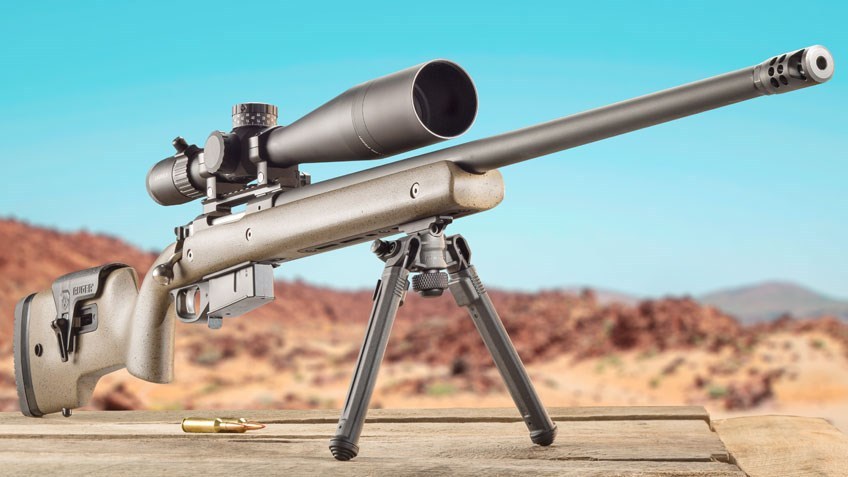
Savage 110 Tactical Desert - Available in 6.5 Creedmoor and 300 Win Mag along with other calibers. Costs ~$650 USD. Left-hand versions are available. Free floated, threaded barrel.

Tikka T3x Tactical - Available in 6.5 Creedmoor and 300 Win Mag along with other calibers. Costs ~$1700 USD. Left-hand versions are available. Adjustable stock and threaded barrel available.

Chassis Rifles:
Ruger Precision Rifle - Available in 6.5 Creedmoor for $1300. (Skip the 300 Win Mag, it is too heavy/expensive for its size over 20lbs loaded and ~$1700). Adjustable stock, free-floated barrel with long handguard, uses multiple kinds of magazines, including Magpul 308 AR / SR-25 magazines.
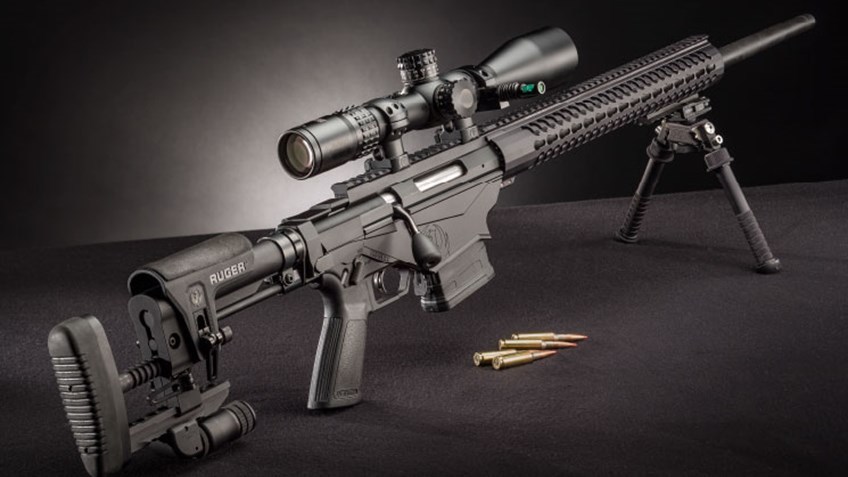
Savage AXIS II Precision - Available in 6.5 Creedmoor for $790. Adjustable stock, free-floated barrel with Mlok handguard, threaded barrel.
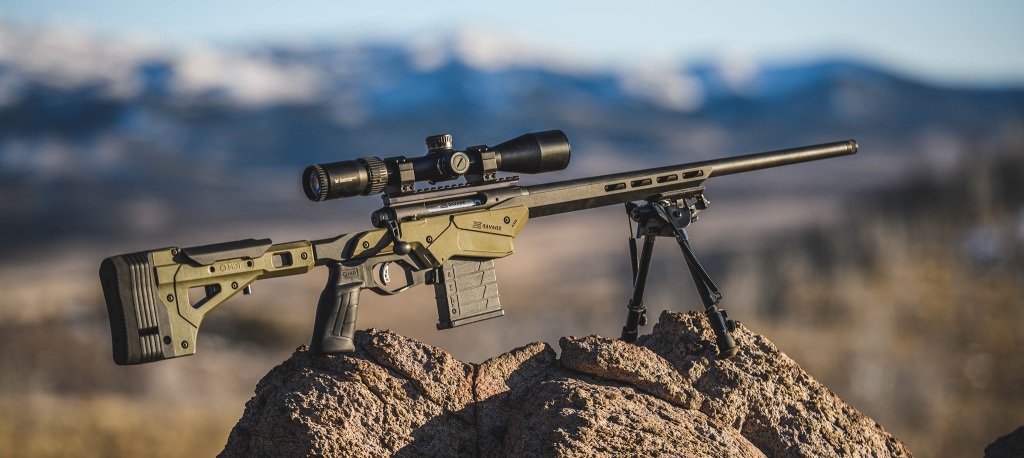
Savage 110 Precision & 110 Elite Precision - Available in 6.5 Creedmoor, 300 Win Mag, & 338 Lapua for $1200-$1700. Adjustable stock, free-floated barrel with Mlok handguard, threaded barrel. Available in all calibers in a left-hand configuration.
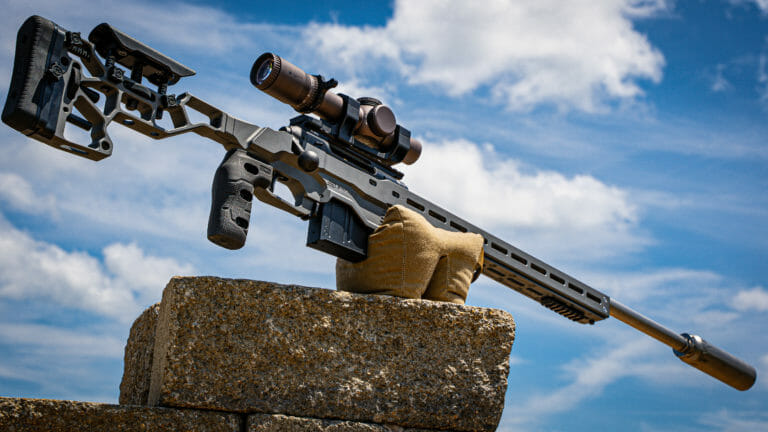
Tikka T3x TAC A1 Available in 6.5 Creedmoor ~$1700. Adjustable stock, free-floated, threaded barrel, muzzle brake, Mlok handguard, threaded barrel. Available in all calibers in a left-hand configuration.
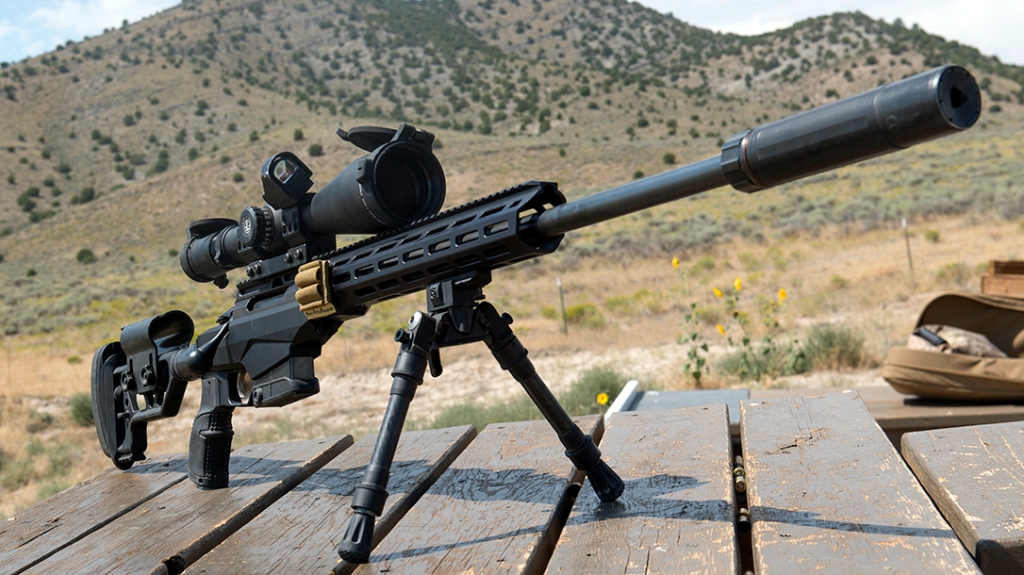
c. Large Magnum Precision Rifles:
Large magnum rifles are designed to reach out far. How far? Some consider the maximum range of the popular 338 Lapua Magnum to be around 1800 yards. The more specialized 375 CheyTac extends that range to 2400 yards. These are highly specialized rifles requiring a large amount of skill and training to use at these ranges. You should not consider the purchase of one of these rifles unless you can A) already hit consistently at 1200 yards with a medium caliber precision rifle or B) are committed to practice with a medium caliber precision rifle and are just buying this while they are still available over the counter. Ammunition is expensive, so you should be prepared to buy enough in whatever caliber you choose to allow for practice, sighting in, and deployment. Calibers in this class include 338 Lapua, .338 Norma Magnum, .338 Remington Ultra Magnum, .338-378 Weatherby Magnum, 375 CheyTac, .408 CheyTac, 416 Barrett, and 50 BMG. At this level of shooting, you can do your own research to choose your cartridge if deciding for something other than 338 Lapua.
Here are some options, from least expensive to most:
Savage 110 Precision & 110 Elite Precision - Available in 338 Lapua for $1300-$1700. Adjustable stock, free-floated barrel with Mlok handguard, threaded barrel. Available in all calibers in a left-hand configuration. Really one of the best choices for this caliber under $2000
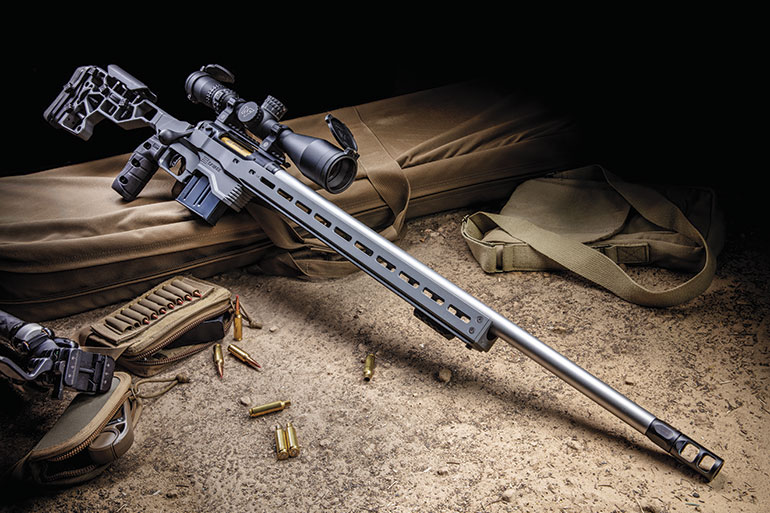
Barrett MRAD - Probably one of the most flexible platforms on the market, this rifle allows for you to switch between 6.5 Creedmoor, 300 Win Mag, and 338 Lapua easily on the same platform. This makes practice cheaper and allows for mission flexibility. It also stores very compact. It is pretty spendy though at ~$6000.
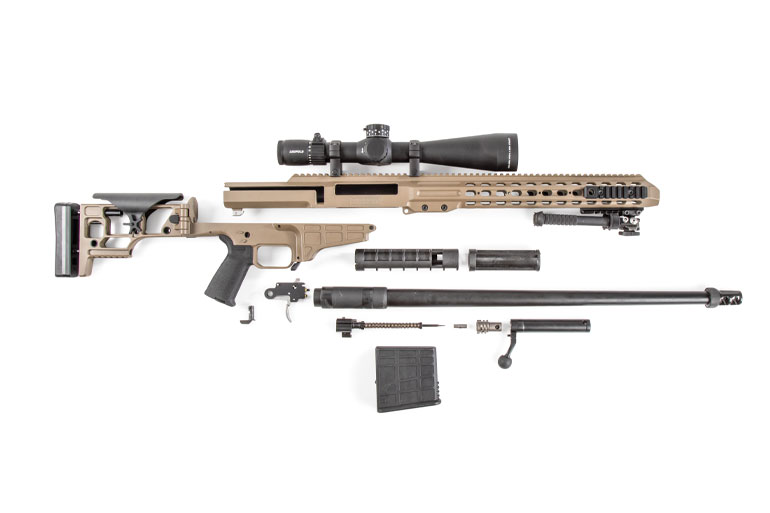
Cadex CDX-40 Shadow - Available in 375 & 408 CheyTac for ~$7000. Adjustable stock, free-floated barrel with Mlok handguard, threaded barrel.
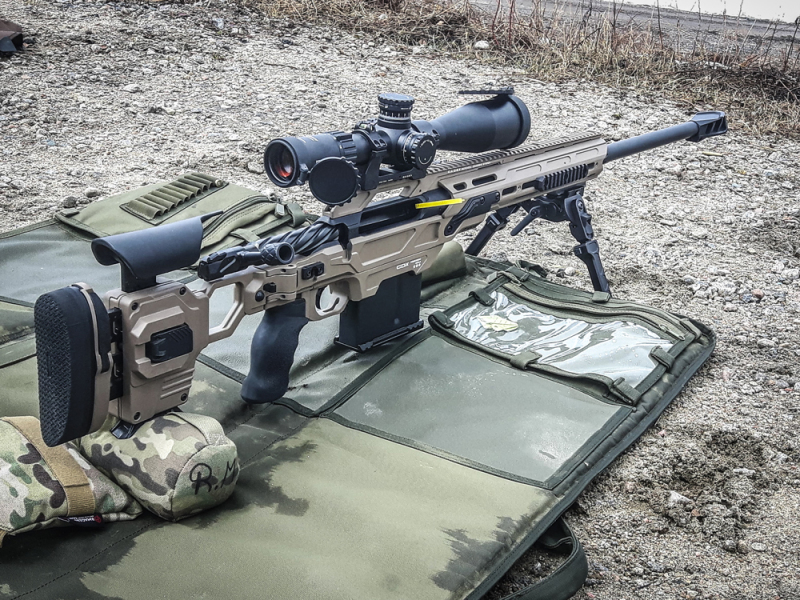
Precision Rifle Optics
Optics for bolt guns should provide adequate magnification, the reticle should allow for ranging and holdovers, it should have adjustable turrets, and it should be durable enough to handle recoil. Reticles like the typical ACSS become irrelevant, as precision fire requires the calculation of a fire solution and adjustment of scope with turrets. Reticles here should still have MIL markings to help with ranging and to help with holdovers given by your spotter.
Here are some recommended scopes to consider in this class of optic:
- Primary Arms PLx 6-30x56mm - ACSS Athena BPR MIL $1500
- Nightforce ATACR 7-35×56 & ATACR 5-25×56 $3500
- Vortex Razor HD Gen II 4.5-27×56 & 3-18×50 $2500
- Kahles K525i 5-25×56 $3,300
- Schmidt & Bender PMII 5-25×56 $3,200
- Bushnell Elite Tactical XRSII 4.5-30×50 $2,250
- Burris Xtreme Tactical XTR II 4-20×50 $1,400
- Bushnell Elite Tactical DMRII 3.5-21×50 $1,600
Another optic you will need to get is a spotting scope. Spotting scopes are for your spotter, an essential member of the precision rifle team. The spotter should be equipped with a spotting scope that performs well in low light, is durable, has very good magnification, and preferably, has the ability to employ a reticle of its own to provide even more accurate ranging.
Here are some recommended spotting scopes to consider:
- Vortex Optics Viper HD 20x-60x $800
- Vortex Optics Razor HD Spotting Scopes - Mil Ranging Reticle Available $1200-$1900
- Burris Signature HD Spotting Scope 20-60x85mm $1500
- Athlon Optics Argos HD 20-60×85 $369
- Vortex Optics Diamondback HD 20-60 $500
- NightForce TS-80 20-60x80mm $1600
- Bushnell 20-60X80 Terrain $1200
- Bushnell Legend Tactical - T-Series 15-45X60 $625 - Affordable Option with a Ranging Reticle
Here are some of the considerations that go into selecting a scope:
Here is a good breakdown on spotting scopes. Spotting scopes are excellent for observation, not just for precision rifle shooting:
As you can see, working at long ranges is an investment. It will take time to assemble both the equipment and skills needed to be useful. Rifles, Optics, and accessories can often be found for substantially less if used, demo-used, or cosmetically marred. That’s the ticket to saving a lot of money when assembling this kind of kit.
“I want to get started now in Long Range Precision Rifle shooting without fundraising a bunch of money.”
Ok, ok, I hear you. Lets assemble a bargain basement kit to get you started in long range precision rifle shooting.
First we will need a rifle. Currently, the most affordable accurate rifle we can settle for is Ruger American Rifle Hunter (Model 26998). At a price of $630, it comes with a receiver mounted rail to mount your scope, a muzzle break, a 22″ heavy barrel, adjesustable trigger with light pull, detachable magazine, and a Magpul PRS-style stock.

For the optic, we are going to focus on the reliability of the turrets and optical quality. This means we are going to stick with a fixed power optic. For this, the well known SWFA SS 10×42 Tactical (Stock#: SS10X42MQ) is a very rugged and reliable choice for only $300. There are also 12x, 16x, 20x magnification versions of this scope for the same price, though 10x or 12x are very flexible in deployment situations like has been seen in Rojava. The SWFA SS 10×42M Tactical (Stock#: SS10X42MMQ) offers a side focusing turret, a creature comfort that allows for less movement while adjusting focus. This upgrade is $100 more.
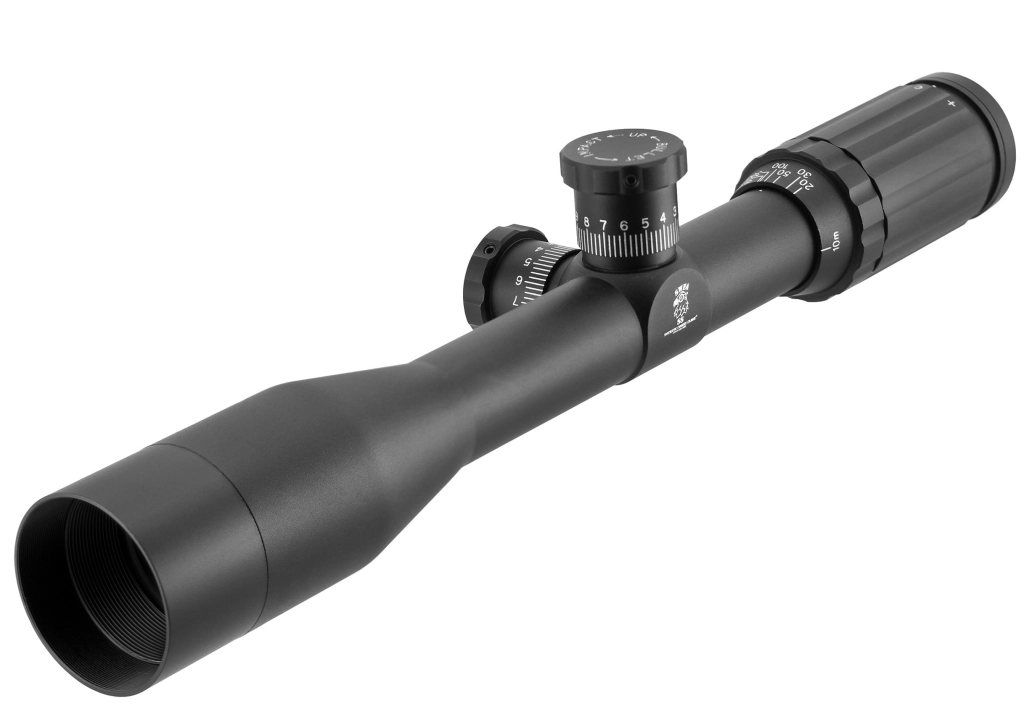
For scope mount/rings, we will select the Leupold PRW2 30mm Rings, Medium Height (UPC 030317017835) for ~$50. Steel rings with equal mounting pressure. Be sure to apply blue thread-locker to your screws and torque the screws to the inch/lbs or ft/lbs recommended in the instructions. You can rent a torque wrench from a local hardware/automotive shop, or you can have the scope installed by a gunsmith (this will be pricier). Over torqueing can break your scope, so be careful!
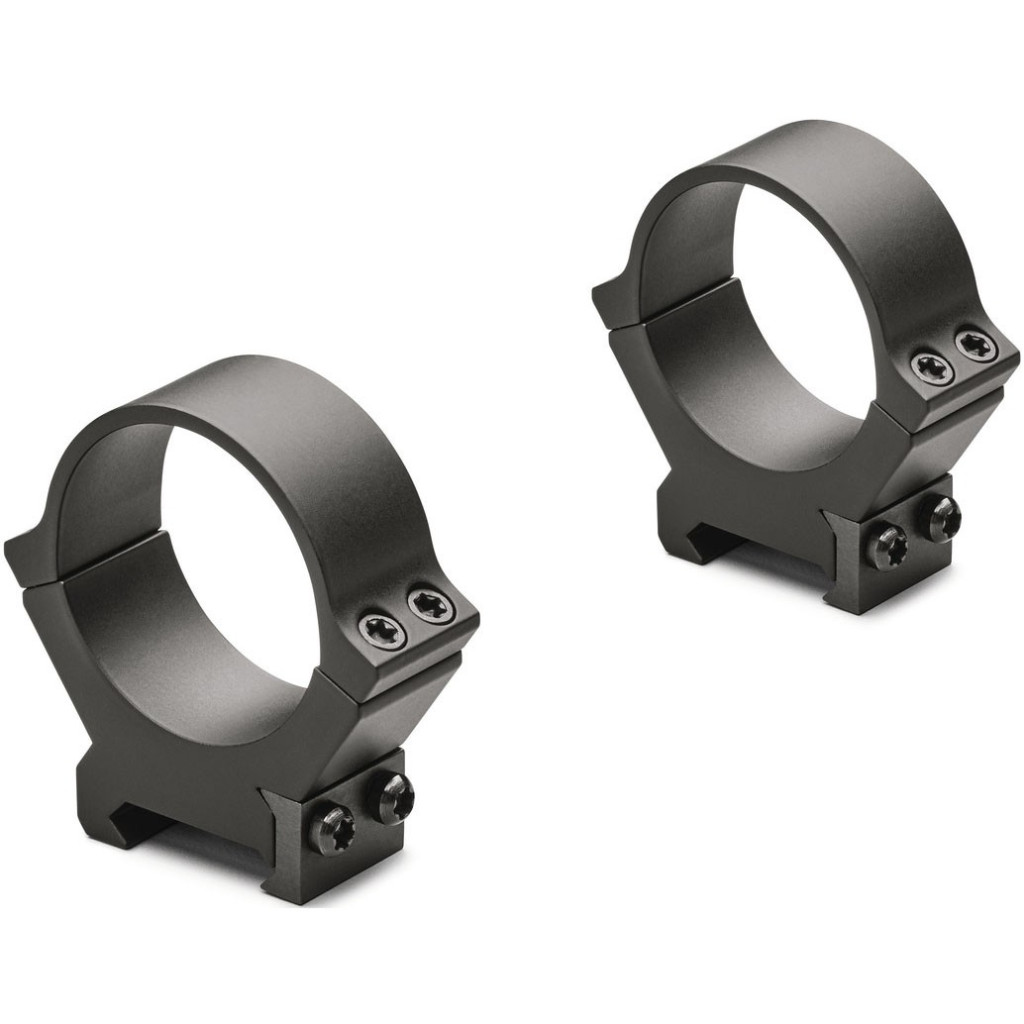
Bipods are extremely useful and important tools. For our budget build, we will opt for the Caldwell 110140 Picatinny Rail Bipod 6-9 in (UPC 661120001553) for $48, paired with a Magpul M-LOK Polymer Rail with 3 Slots (UPC 873750000343) for $8, that will allow the mounting of the bipod to your rifle. This also allows you to detach the bipod and carry it in your back, taking the weight off of your arms and reducing snags on the brush.
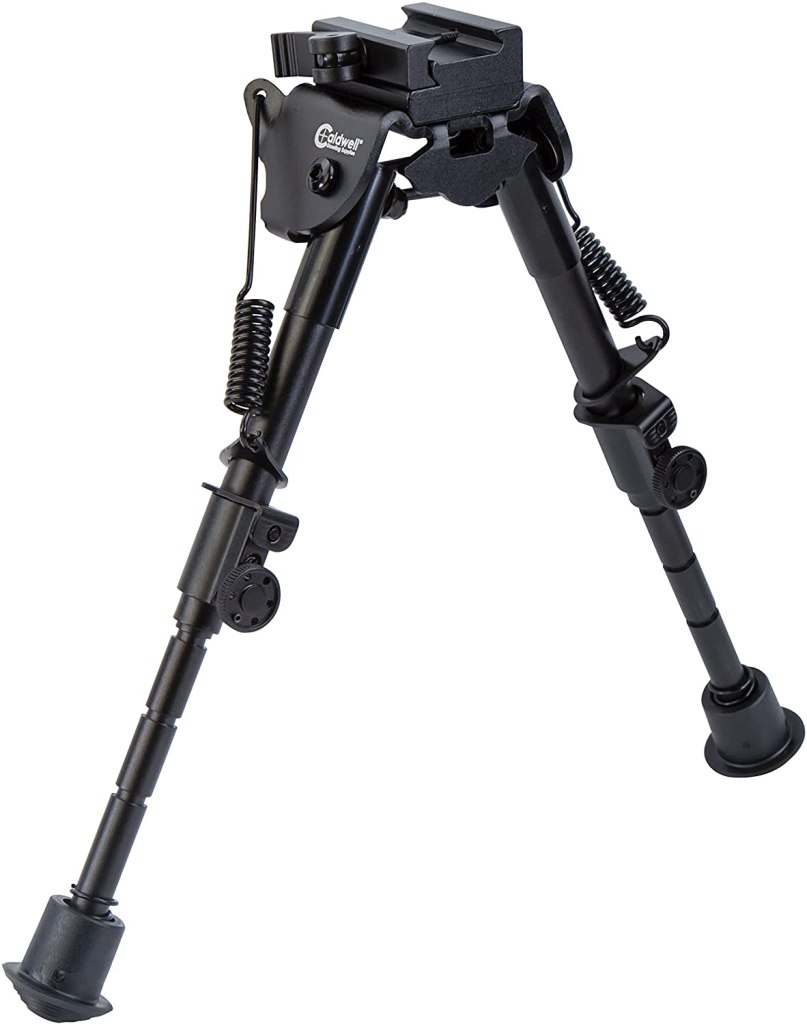
The last things you will need are a beanbag support for the rear of your stock, a notepad, and a pencil. A beanbag will help you subtly change and hold elevation when aiming your rifle, you can get a premade or just make one yourself. A notepad and pencil will be important for taking notes, for making range and windage calculations, and for noting number or rounds fired/sight-ins/and any performance issues. We will be exploring this further in a precision shooting guide to come.
For around $1050 USD, we have a highly functional setup. By looking for used gear and sales, this could drop a bit further. This is less than many rifles listed above without any accessories.
III. Conclusion
After all of this it is important to remember that these are tertiary firearms, firearms that you should only thing about getting once your primary and secondary needs have been fulfilled. These are specialized weapons for specialized roles. They both require dedication to practice. Pistols require a lot of effort to become proficient in. Precision rifles also require effort both shooting, and more importantly, in learning ballistics and field craft. Take your time, don’t spend money that you don’t have, be patient, and don’t chase the next best thing. Pick something, get it, and master it. Capitalism will always throw shiny new ‘wonder-guns’ or ‘super scopes’ at you constantly. Don’t get distracted. Your money is better spent on more practice ammunition and marksmanship courses. Good luck in your practice!
